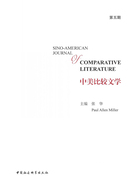
Hollywood and the Chinese Cinema
YE Tan[1]
中文摘要 本文分五个历史阶段论述了自19世纪末中国第一篇影评发表以来中美电影之间的交流与互动。在经典好莱坞时期,中国只是异国情调的艺术来源地,并非其潜在的目标市场。随着好莱坞影业发展成熟,进入黄金期后,数量空前的好莱坞影片涌入中国,但中国本土电影自有其文化特征,并未受到好莱坞的影响。新中国成立后,好莱坞影片一度被禁止在中国放映,中间一些20世纪30-40年代的好莱坞经典虽有上映,也仅被当作批评斗争的对象。直到中国改革开放后,好莱坞电影重返中国市场,受到了中国第四代电影人和普通观影者的追捧。自20世纪80年代末90年代初,中国艺术和文化进入多元化发展阶段,第五代电影人也逐渐摸索出中国电影发展的新道路。
关键词 电影;好莱坞;中国;时代
In the post-colonial era, Hollywood films have often been treated by scholars on both sides of the Pacific as a form of cultural invasion; and China, the reluctant victim of this invasion. My discursive review of the interaction between Hollywood and the Chinese Cinema is intended not to negate the invasion-and-resistance theory in general but to repute the generalization of the “Chineseness” in the cultural exchanges of more than two centuries. In China, there has never been a uniform opinion of Hollywood, because there has never been a single, faceless entity of the Chinese. In China, authorities’ opinions, art elites’ opinions, filmmakers’ opinions, cineastes’ opinions, and masses’ opinions have always differed, sometimes polarized, from one another. Two perspectives, to treat Hollywood as a political entity and to treat it as a provider of entertainment, have been the major demarcation of the differences. Any failure to differentiate these opinions is a failure to understand the complexity of the Chinese mentality and history. In this essay, the term, “Hollywood” is used to distinguish commercial ventures from auteur films, independent films, or underground films made in the United States, and “audience” is referred to the average cinema goers who view films, not just Hollywood films, as a sheer means of
entertainment.
Historically, the relationship between Hollywood and China can be divided into five phases. The first phase (1895-1927) covers the Classical Hollywood period. The second phase (1927-1949) starts with Hollywood’s Golden Years and ends shortly after the establishment of the People’s Republic of China. The third phase (1949-1979) embraces the thirty years of Maoist control, when Hollywood was banned in China. The fourth phase (1979-1989) begins with the reintroduction of Hollywood to China and ends with the Tiananmen Square Incident. The last phase (1989-present) is the Post Deng Era, from Tiananmen to the present.